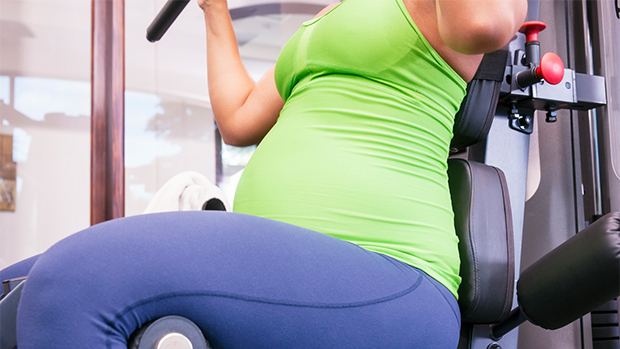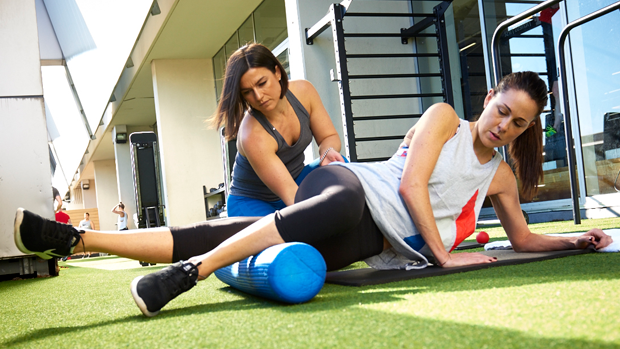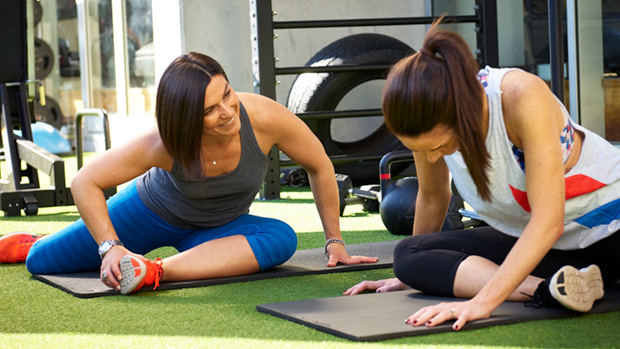So you’ve just found out you’re pregnant; cue the excitement – and touch of anxiety! You know it’s best for both you and bump to keep active, but the last thing you need is added stress over not knowing what you should and should not be doing at the gym.
If you’re new to exercise, it can be intimidating enough as it is, but even for seasoned gym-goers, pregnancy creates a whole new world of questions. Plus, the bout of morning sickness can be enough to place fitness in the ‘too hard basket’.
The great news is there’s plenty you can still do at every stage of your pregnancy – it’s just a matter of finding what’s right for your body.
BEFORE YOU GET STARTED
Remember, each pregnancy is different and these guidelines are only a basic prescription to exercising safely, so it’s important to consult your medical professionals for advice regarding your pregnancy.
How much you trained pre-pregnancy, your age and fitness level will pre-determine what you’ll be able to do in the gym whilst pregnant.
If you were not previously exercising this would be a great time to start and maybe a good time to seek out a fitness professional to help guide you.
FIRST TRIMESTER
During weeks 1-12, once you have clearance from your doctor, you should be able to continue doing everything you were previously doing in the gym.
This is also the time when you may be lowest on energy, though from my experience, if you can manage to push through and get the session done you will feel better for it!
THE NEXT STAGE
Things change after your first trimester; and you’ll be making swaps for some pregnancy-friendly options.
We’ve touched on the 70% rule when it comes to rate of exertion (i.e. going at an intensity level of about 70% of your maximum effort) as well as ensuring pelvic floor safety. Now, let’s delve deeper into the equipment, classes and movement patterns to consider, as well as what to avoid during this stage.
THINGS TO AVOID
When it comes to movements…
- Lying flat on your back – the pressure of the baby can cause interruption of blood flow back to the heart.
- Lying on your stomach.
- Crunching, twisting and any movements that cross your midline as this can exasperate abdominal separation.
- Rotational movements that collapse the space of the womb.
- Holding your breath – it creates too much pressure on the pelvic floor.
- Pushing movements or isometric exercises that cause your abs to bulge or peak outwards.
When it comes to equipment…
- Unstable surfaces, such as BOSU or wobble boards. Your centre of gravity just isn’t what it was before!
- Abductor and adductor machines – due to the pressure it puts on the pelvic girdle.
- Lat pull down and assisted chin up machine – they’re tricky exercises to get correct during pregnancy, especially if you have abdominal separation. The intra-abdominal pressure and any excessive curvature of the spine on either exercise can cause abdominal peaking.
- 45 degree back extensions and glute/hamstring developer – due to the position you need to be in when using them.
- Swap the treadmill for the X-trainer or arc trainer. The low impact is a far better option to protect your pelvic floor.
- Any equipment that requires you to lie on your stomach. For example, swap the lying hamstring curl for the seated hamstring curl.
When it comes to classes…
- Anything that might cause you to overheat – such as Hot Yoga. Opt for gentler classes like BodyBalance.
- Rapid changes in position – classes such as Barre Attack and Pilates are good options, but be mindful of balance and co-ordination challenges, as well as changes to blood pressure with rapid changing movements.
- High impact classes such as BodyAttack or BodyCombat. Opt for classes Cycle classes instead. You’ll get the same intensity while avoiding impact. Remember the 70% rule and make sure you stay close to the fans!
Strength based classes such as BodyPump and SXT are also great options, just remember to follow the tips above.
If you’re heading to a group fitness class, be aware of the positions and movements you need to avoid when exercising. It’s a good idea to introduce yourself to the instructor prior to the class. Letting them know you’re pregnant will ensure they give you safe alternatives where needed.
Above all else, listen to your body!



